 It was the Springboks’ best performance of the tour. A real confidence booster after the shock defeat against the University side but at the same time a game that had a negative impact in more than one way. It showed New Zealand the danger of allowing the Springboks space to play the Craven-linking pattern. Not that New Zealand was unaware of the Springbok style but it re-affirmed the necessity of keeping the Springboks on the back foot.
It was the Springboks’ best performance of the tour. A real confidence booster after the shock defeat against the University side but at the same time a game that had a negative impact in more than one way. It showed New Zealand the danger of allowing the Springboks space to play the Craven-linking pattern. Not that New Zealand was unaware of the Springbok style but it re-affirmed the necessity of keeping the Springboks on the back foot.
On the Springbok management side this comprehensive victory left them with the belief that the Craven-linking pattern is the master-pattern – the way to beat the All Blacks. Howe’s sterling performance left the impression that he was the key to unlock the pattern and that earned him a place as flyhalf for the 4th Test side.
The end result is that the Springboks went into the 4th Test with a very predictable game plan and a flyhalf that could play only way – running it. The All Blacks knew exactly what was coming and was prepared for it; they had counters in place to take Retief and Lochner out of the game and strategies to exert pressure on the South African halfbacks, Strydom and Howe. These four players were vital to make the Springbok pattern work – they were so effectively countered that all three had probably the worst games of their respective tours.
One of the major reasons why the pattern worked against the Maori and not in the fourth Test, was dominance at set piece. The Maori was (and still is) renowned for their razzle dazzle rugby. Pre-match concerns about the Maori pack turned out to be warranted. Forward dominance (or lack of it by the Maori) was the vital ingredient that prevented the Maori to ‘razzle and dazzle’ and which allowed to Springboks to run away with the match. It was also the key ingredient whoose absence ‘dislodged’ the Springbok ‘master-linking-pattern’ in the 4th Test.
So disappointing was the Maori performance in this so-called ‘5th Test’ that the Maori to this day seems to look for excuses. In 2012 they came-up with the jackpot excuse – the racial card. Muru Walters, the Maori fullback in this match and now a church minister, demanded an official apology from the New Zealand Rugby Union for instructing them (the Maori) to lose the match in 1956 because they were told that if they won that would mean the end of rugby relationships between New Zealand and South Africa (see article below).
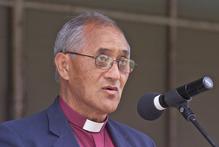
Former NZ Maori fullback Muru Walters said his side were told to throw their match against South Africa in 1956 ‘for the future of rugby’.
Maori Affairs Minister Ernest Corbett told the 1956 Maori All Blacks minutes before the game they must not beat the Springboks “for the future of rugby”, says a member of that side.
Maori All Black fullback Muru Walters, now an Anglican bishop in Otaki, said Mr Corbett visited the team in their Eden Park dressing-room and told them if they won the All Blacks would never be invited back to South Africa.
The destructive message “ripped the guts out of the spirits of our team”, he told Radio Waatea yesterday. Expected to test the Springboks, they lost 37-0.
It was not only the New Zealand Rugby Football Union (NZRU) that should apologise for its treatment of Maori players, the Government should as well, Bishop Walters said.
The NZRU has refused to apologise for excluding Maori players from its side to tour South Africa, leaving some brilliant players at home to appease the apartheid regime.
Mr Corbett, who died in 1968, told the side they had to lose, Bishop Walters said.
“What he said was you must not win this game or we will never be invited to South Africa again”, Bishop Walters told Radio Waatea host Willie Jackson.”
I thought he was joking, but then another official came in and said the same thing… for the future of rugby, don’t beat the South Africans.”
That was a pretty destructive message, actually… and it ripped the guts out of our spirits of our team.”
The tame defeat in front of an expectant crowd estimated at 61,000 subjected the side to ridicule, in a year when the All Blacks beat the Springboks in a series for the first time.
Four years later an all-white New Zealand team toured South Africa, where they were soundly beaten.
Maori Affairs Minister Pita Sharples has labelled the NZRU arrogant for refusing to apologise to former Maori players for excluding them from past tours to South Africa on racial grounds.
Author Malcolm Mulholland found out about the unresolved issue while researching his book Beneath the Maori Moon. He wrote to the NZRU last year inviting it to apologise but the union did not want to play ball.
The South African government’s apartheid regime of segregation was in force from 1948 to 1994. Maori players were excluded from All Black tours in 1928, 1949 and 1960.
NZRU Maori Board chairman Wayne Peters has said the NZRU board considered the matter twice. It decided in the centenary year of Maori rugby it was better to focus on celebrations rather than political issues from the past.
When the Maori played the Springboks at Napier in 1921, where visitors won a hard-fought match, a South African journalist Charles Blackett wrote an inflammatory match report.
“Bad enough having to play a team officially designated New Zealand Natives, but the spectacle of thousands of Europeans frantically cheering on a band of coloured men to defeat members of their own race was too much for the Springboks who were frankly disgusted.”
After the 1956 game the Maori captain, Tiny Hill, an All Black forward, told his pack they had “played like girls”.
“All eight of them,” one of the other forwards retorted.
The match report in Te Ao Hou, published by the Maori Affairs Department, said the Maori tackling was “ineffectual” and it was a great disappointment to the thousands of Maori people present.
“The score was hard to believe… the people were subdued, the overwhelming defeat had come as a great shock.”
Bishop Walters had redemption of sorts in 1961, when he kicked the winning goal for the Maori against France.
(Tiny Hill, by the way, was not the captain of the Maori side in 1956 as the article above states, Bill Gray was the Captain)
Maxwell Price writes that the pre-match talks with the Maori (and the Springboks) sprung from concerns about violence in this match. There was the 1921 match which was characterized by ugly flare-up and Lochner apparently received some threats not to play in the match. Dana Niehaus wrote an annoyingly stirring pre-match article -clearly an attempt to sell newspapers- in which he stated that the Springboks will answer aggression with aggression. It did not go off well (in both camps) and without a doubt goaded New Zealand rugby officials and Danie Craven to their pre-match talks with the teams. I have my doubts whether the death threats that Lochner apparently received as stated by Gert Kotzé in an Afrikaans newspaper (see subscript of the photo in the table below) was real. None of the other five first-hand accounts of the match -which I referenced- mentions the Lochner threats.
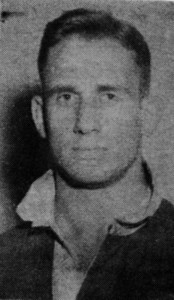
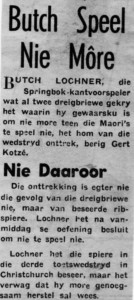
Warwick Roger has the following in his book ‘Old Heroes’ about Dana Niehaus and his article: “There was controversy about the game against the Maori, most of it stirred up by the South African press, in particular Dana Niehaus, writing in the Transvaaler (sic), the paper Johannesburg Afrikaners read with their morning boerekoffie, the paper once edited by Dr Verwoerd. ‘The match should not have been arranged,’ wrote Niehaus. ‘In most circles the inclusion of such a match was treated with a little bit of suspicion, especially since the Coloured section of New Zealand was playing against the representatives of a land where the dividing line is very sharp and definite.’ Niehaus went on to write that he thought he was write in saying that the Springboks wouldn’t purposely look for trouble, ‘but if their ire is aroused, then the fur will fly’.”
Nevertheless, these two articles (Niehaus and Kotzé) are in my mind evidence that the talks were not aimed at convincing the Maori to throw the match but to prevent a racial brawl.
A mischievious spin on Muru Walters’ 2012 remark:
Starting from a position that the pre-match talks were never about throwing the match but about preventing a brawl one could ask why it ‘ripped the guts’ out of the Maori and not out of the South Africans? Adding spin to Walters’s remark one could argue that it summarize the whole 1956 series.
With mischievous twirl one could reason that it confirms that South Africa was the only team that tried to play decent rugby in 1956; hence the fact that they could play when asked to steer-clear from potential bust-up tactics. The Maori in contrast felt that their ‘guts was ripped out’ when asked to play the game ‘properly.
‘Impishly, one could consequently conclude that the only way New Zealand was able to win the series in 1956 was to throw South Africa off their game with niggle, knuckle, menace and misconduct. Such a gyration would of course be an attempt to create question marks about the methods employed by New Zealand to navigate their first series victory over South Africa in 1956.
The fact that Warwick Roger wrote a book (Old Heroes) 40 years later about the impact of this tour on New Zealand -one could further one’s argument- is more than ample evidence that the Kiwis did lose the plot to some extent in 1956.
Being full of self-important rightfulness one could even refer to the truism that you should not throw stones if you live in a glass house and remind the reader of those constant referrals -by New Zealand rugby scribes- to Afrikaner emotional dependence on winning a test series to the extent that they were prepared to cheat and food poison players.
Danie Craven was not the only manager to launch an official complaint about the standard of rugby match officiating in New Zealand one could throw in as well to strengthen the argument (The 1977 British and Irish Lions did so too; they, by the way, lost the series against the All Blacks in the last minute of the first test due to a penalty that leaves one dumbfounded to say the least).
All of that would of course make good sense if you sit on the South African side of the fence and no sense if you sit on the Kiwi side of the fence. The New Zealanders would find this twist offensive because it detracts from the fact that New Zealand deserved to win the rubber in 1956 (because their forwards outplayed the Springboks in the third and fourth test matches of that series).
The spin would spoil the achievement in the same way Walters’ remark puts a smudge on the splendid performance of the Springboks in this match.
Expectations and reactions
Personally, I believe the 2011 Maori-told-to-throw-the-match story is an opportunist attempt to exploit the heightened expectations and severe disappointment that surrounded this match for a personal agenda. The agenda, of course, to get the NRFU to apologise to the Maori population for touring to South Africa in 1949 and 1960 without them.
The Maori match had aroused immense public interest. It drew the biggest crowd ever to attend a game in New Zealand. The final official number of 59 800 eclipsed the previous record of 58 000 who had gone to see the British and Irish Lions at Eden Park in 1950 by nearly 2000. As intense as the interest was so intense was the disappointment with the Maori after the match.
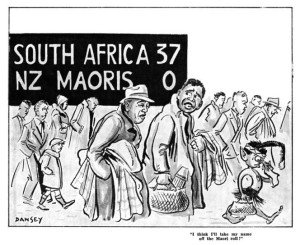
Midway through the second half, with the score climbing in the twenties, thousands of glum-faced spectators began to leave the field, writes Maxwell Price.
Seldom in the history of human relationships has so little come out of what promised to be so much, writes Terry McLean in his book ‘Battle for the rugby crown’.
The match was seen as a total ‘flop’ and that thought carried so much weight that there was very little (if any) appreciation that this was the Springboks’ finest hour, writes McLean and Maxwell Price. Maxwell Price relates that the word ‘flop’ in the headlines of papers and the Star’s headline of: ‘Huge crowd starved of thrills in 37-0 rout at Eden Park’ were difficult to understand. It seems that the bright, breezy and exciting rugby that the Springboks played meant very little to the New Zealand rugby scribes, says Price in his book ‘Springboks at Bay’.
This reaction stemmed from the expectations that the Maori with their cunning, their speed, and their unexpectedness and above all their warlike instincts would show the Springboks a thing or two. Throughout the Springbok tour, from Whangarei to Invercargill, one continually heard the refrain: “I’ll love to see these boys play the Maori.”
When the match culminated into a one-sided affair Doherty of the Auckland Star went so far as to write that it would be better to play a Barbarian side against touring international sides rather than the Maori.
Teams
The teams can be seen in the table below. There were five All Blacks in the Maori side, namely: Tom Katene, Pat Walsh, Bill Gray and Keith Davis in the backline and Tiny Hill in the forwards. The Maori prepared for months for this match and played in 5 warm-up matches, namely against:
WEST COACH (June, 23 – winning 26-20)
WEST COACH BULLER (June, 27 – winning 22-3)
NELSON, MARLBOROUGH & GOLDEN-BAY MOTUEKA (June, 30 – winning 51-5)
SOUTH CANTERBURY, MID-CANTERBURY & NORTH OTAGO (July, 4 – winning 18-15)
COUNTIES (9August, 22 – winning 30-3)
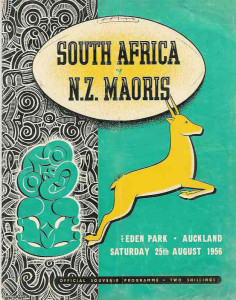
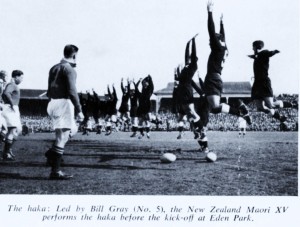
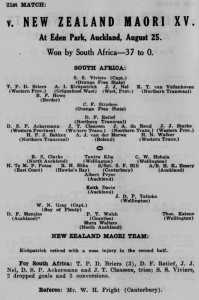
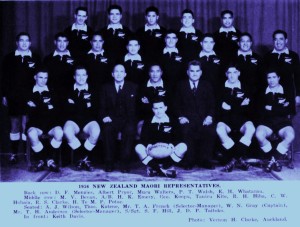
The Match
Right from the start the Springboks commanded the scrums and line-outs with Johan Claassen and Salty du Rand in great form. Strydom at scrumhalf was faultless and Howe was simply brilliant.
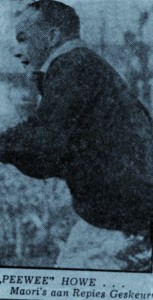
With sure hands, tremendous acceleration and a swerve of prodigious proportions, Howe cleaved his way repeatedly through a defence that was ultimately unable to cope with him. It was one of the great performances of the tour, it was surely the finest of Howe’s career, writes Reg Sweet in his book ‘The Kiwis conquer’.
Retief, Ackermann and Starke, revelled in their biggest spree on tour. Retief was in magnificent fettle driving through the loose or linking with his inside backs, and Ackermann who scored two spectacular tries in Auckland in the 3rd tour match added to that with another in very similar style.
Twice, Kirkpatrick hung onto the ball too long and ruined what looked like certain tries.
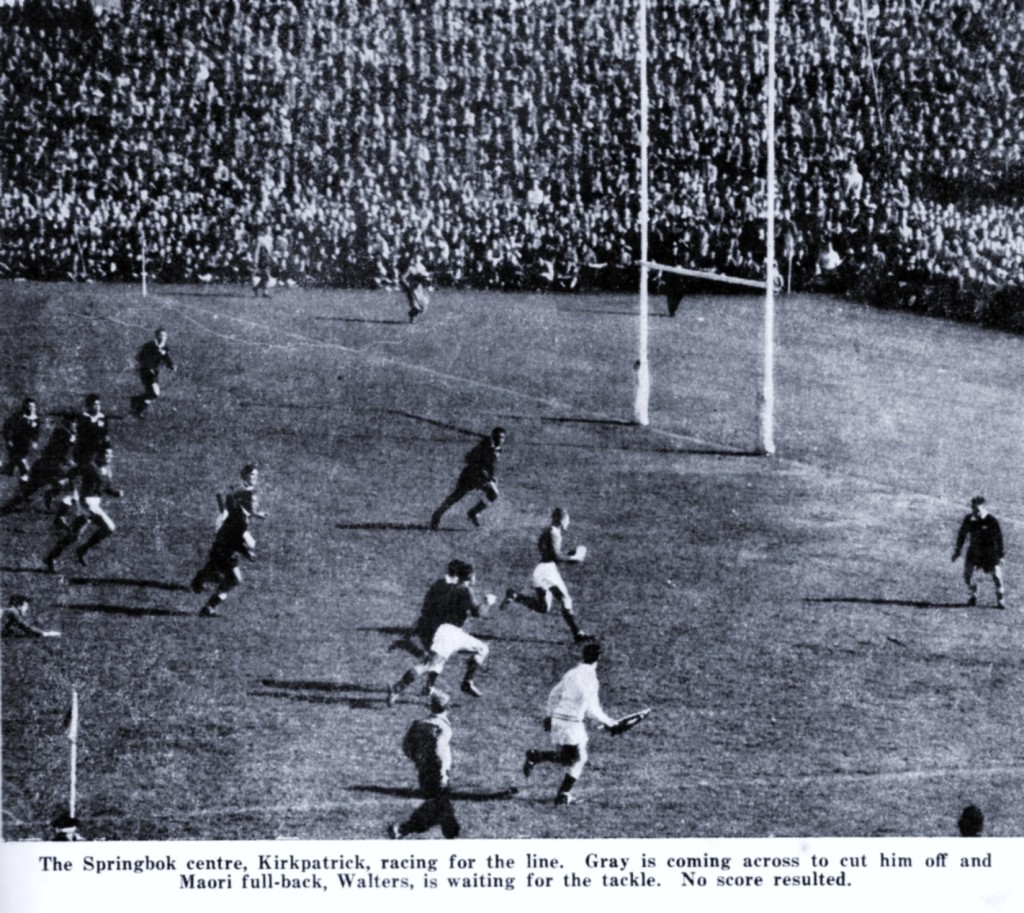
This picture shows one of the early try opportunities that was ruined by Kirkpatrick hanging on too long with Briers looming in the open.
It took only 13 minutes for the Springboks to crack the Maori defence with Retief scoring after Howe made a clear break with Briers cutting inside after receiving the ball to link with Retief when he got caught close to the line.
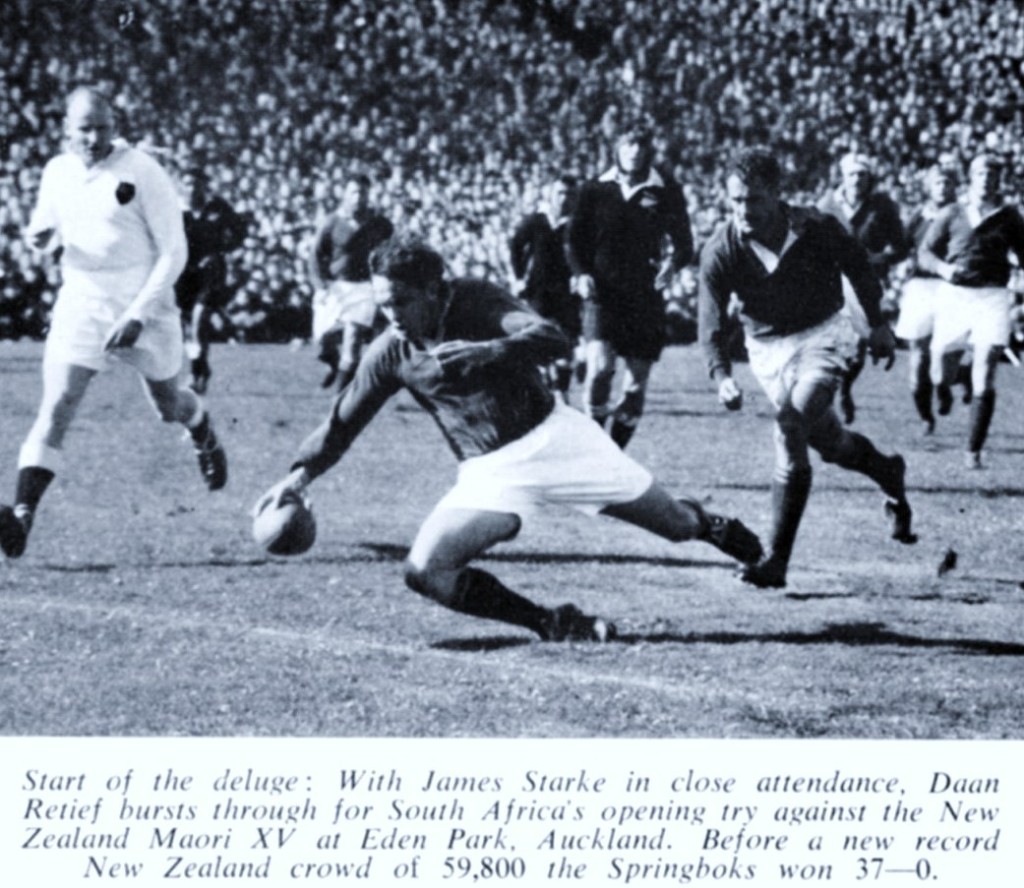
This picture shows Retief scoring the Springboks first try.
Nel was next to score in the 26 minute after another incisive break by Howe. Starke loomed up in support and ran to the 25 meter line before shifting the ball to Nel who scored in the corner.
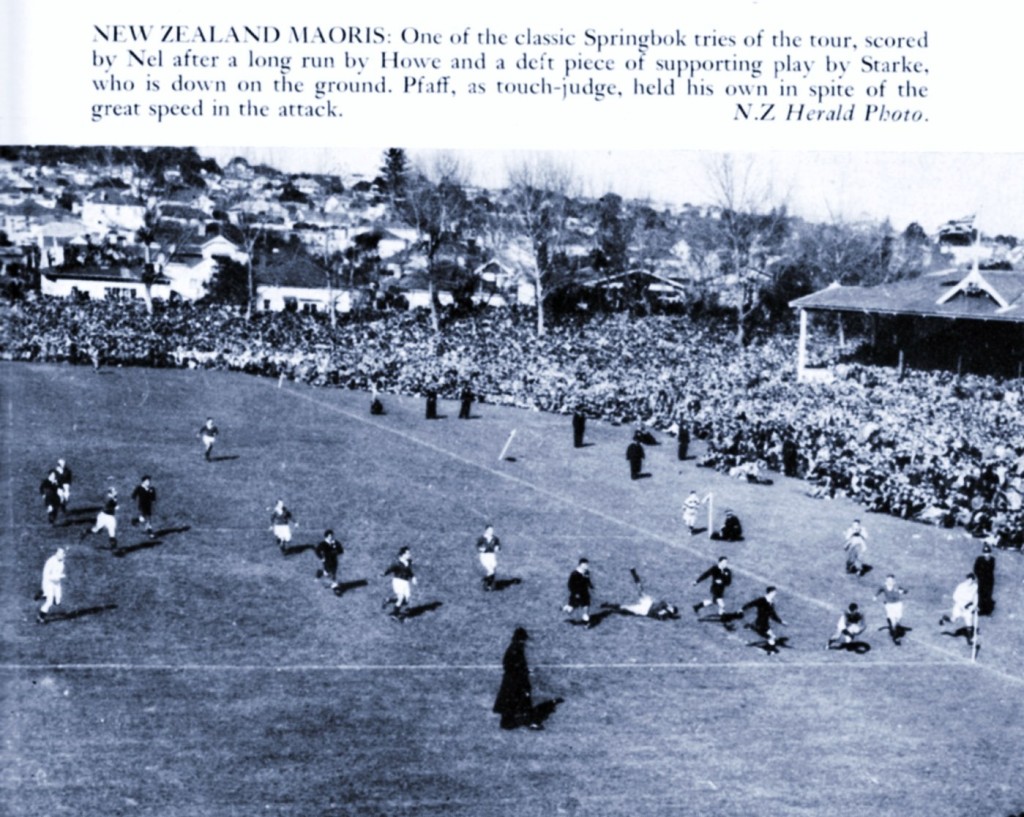
This picture shows Nel scoring the Springboks second try against the Maori after a great break by Howe and good support from Starke.
Briers scored next after a break by Strydom who gave to Kirkpatrick who kicked the ball forward. The ball bounced favourable for the winger to produce the first of his three tries.
The fourth try was scored by Ackermann early in the second half. The try came after Howe slipped through a gap from after receiving the ball from a scrum. Retief took the ball in support and handed it to Ackermann who raced 40 meters for his try.
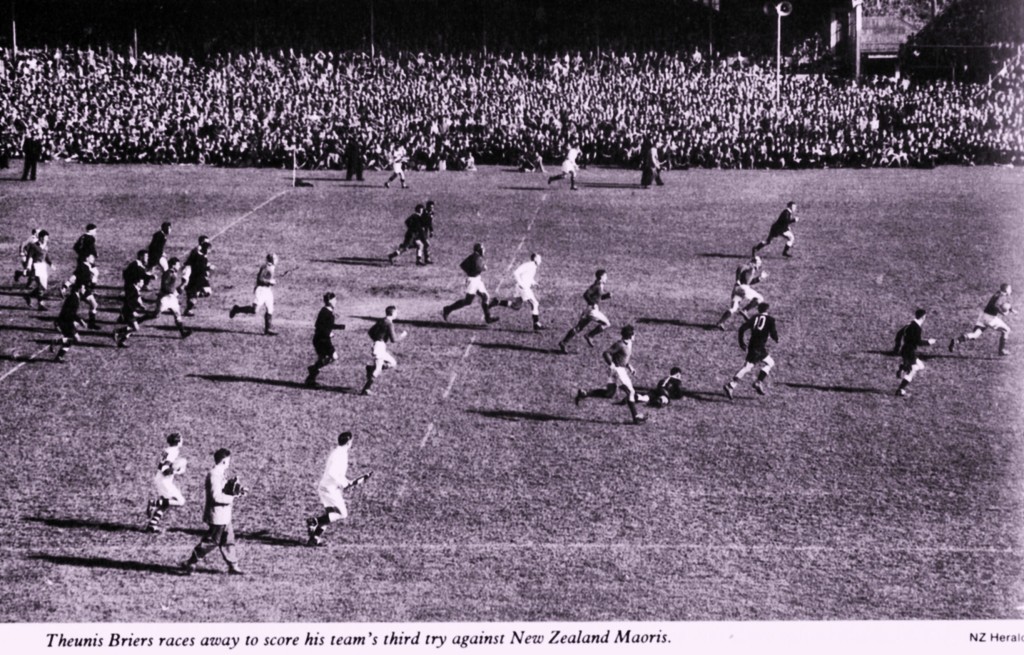
Briers scored the next two tries. The first (his second) came after he snapped-up a poor line kick by Menzies. His third came after Nel swerved through to create space and as the picture above shows Briers raced away to score a 50 meter try.
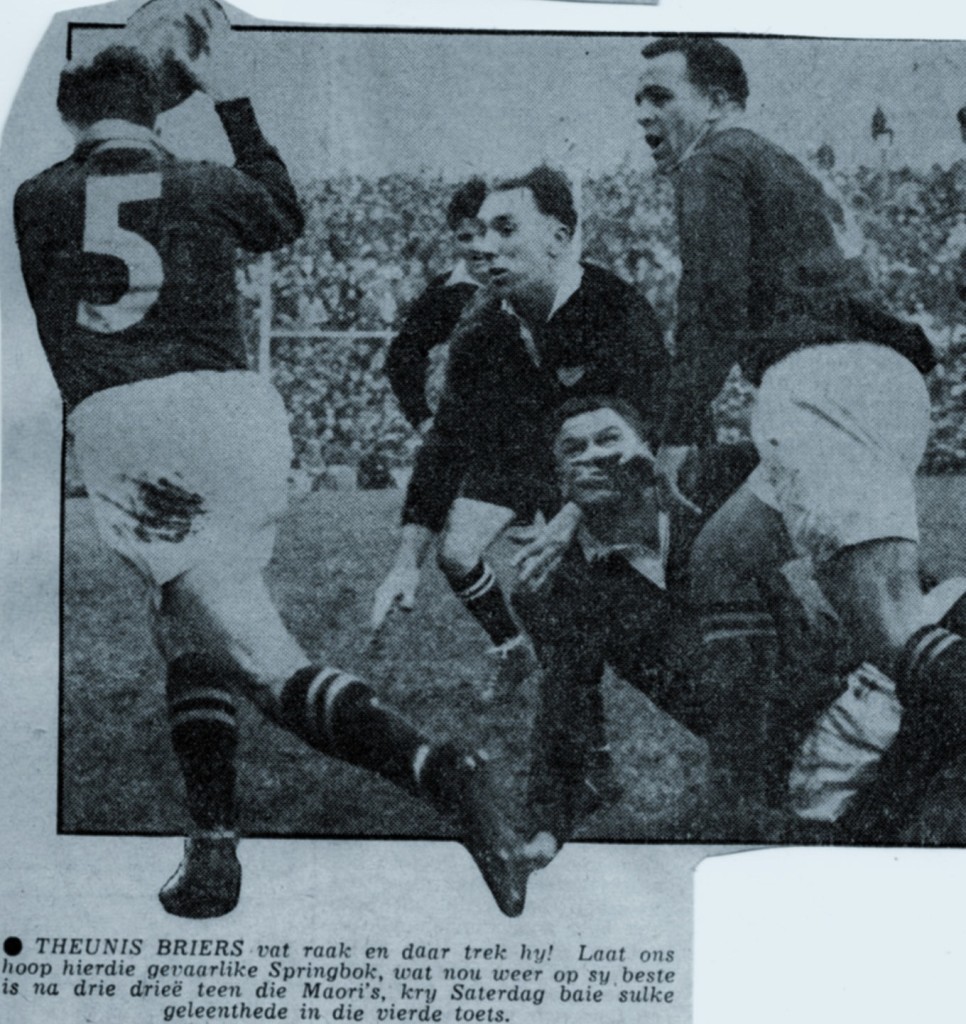
Theunis Briers showed in this match that he had regained the form that he showed against the 1955 Lions and scored three good tries.
The last try was scored by Johan Claassen after he forced his way through a line-out.
Basie Viviers also succeeded with two dropgoals.
The Springboks had arrived in Auckland thoughtful and depressed after a terrible show against the university team. It was too much to hope for a big victory against the Maori. The big victory did come however and in a manner that was exciting and brilliant. The style of play was reminiscent of the Springboks at Murrayfield in 1951. The precise handling; the power upfront; pace in the back; the ever-present support of fast loose forwards who moved the ball like accomplished three-quarters. It was a morale boosting performance. Never in the history of Maori rugby in New Zealand had an international team beaten a full strength Maori side by such a margin. Dr Craven said: “We are very happy with the result. It was the first time we have played speed rugby. I would like to thank our opponents for allowing us to play open football and for the spirit in which it was played.”
[youtube]http://www.youtube.com/watch?v=28sYaOhM4nM[/youtube]
First Half
[youtube]http://www.youtube.com/watch?v=pp706lLVvZ4[/youtube]
Second Half
GBS I tried to correct the mistake in the title but the darn thing is not responding.
OK I got it sorted eventually.
This response from a kiwi on this piece about the Maori game in 1956. Kimbo wrote:
“Nevertheless, these two articles (Niehaus and Kotzé) are in my mind evidence that the talks were not aimed at convincing the Maori to throw the match but to prevent a racial brawl.”
Quite right! I was bloody pissed off when this issue was played out in the NZ media three years ago during the centenary of Maori Rugby, and, yet again, Doc Craven was (wrongly) fingered as a sinister Machievallian figure in the pre-match talk he gave to the Maori side.
Due to hazy memories and tall stories, and half-baked recollections and rumours about what had happened in the 1921 match between the 2 sides and the subsequent and the infamous leaked Blackett telegram,…
and the omission of Maori players such as George Nepia, Jimmy Mill, Johnny Smith, Vince Bevan and Ben Couch from the 1928 and 1949 All Black teams to South Africa,…
and because it was a game of rugby (physical contact) between white South Africans (coming from a country with apartheid),…
and Maori, who were a people with a history of physical courage, who did not take kindly to being treated as second-class by anyone, especially in their own country, …
and due to the intensely physical, sometimes dirty play that had characterised the tour to that point (Kevin Skinner had played for the All Blacks just a few days before),…
and fanned by idiots like Niehaus…
it was the PUBLIC who put 2 and 2 together, until it added up to 17, and talk starting circulating that it was going to be a blood bath of a game. Just a few days after the Maori game Jan Pickard famously stood up in a pub in Rotorua and loudly promised that Kevn Skinner was going to be carried off the field when the Springboks played against Skinner’s provincial team in the next tour game. That boast soon became common knowledge all over the country…
As a result, the Maori representative on the NZRFU, Ralph Love probably initiated the talk to the Maori team by government minister Corbett (who, even though he was Minister of Maori Affairs, was not Maori), and then Craven himself. Love also spoke to the Maori team, and also made an announcement to the crowd a few minutes before kick off, stressing that good behaviour was expected, and that it was a sporting contest, nothing more.
The motives behind all these actions were NOT to discourage the Maori team. Instead, EVERYONE, politicians, administrators, journalists, players, and public, KNEW there was an elephant in the room – the hope that Maori players would be included in the 1960 All Black team that was scheduled to tour South Africa. IF the game DID degenerate into a racial-inspired brawl, then what chance there was for Maori touring in 1960 would disappear.
Craven, while always doing what was best for South African rugby (which included having All Black teams tour South Africa without Maori players if that was the only way it could be), ALWAYS demonstrated a genuine desire to do what he could to ensure Maori were fully included in the NZ – SA rugby relationship. The man had a doctorate in anthropology when he first toured NZ with the 1937 Springboks, and he would have understood right from that first contact that full Maori participation in NZ rugby and public life was the way it was in NZ. Craven also formed a genuine and abiding friendship with the famous Guide Rangi of Whakarewarewa in 1937, and acquaintanceship with her and her family that was renewed every time he returned to New Zealand in the years after.
So, IF Maori were to have any chance of touring in 1960, and Craven would try and do what he could, the Maori team of 1956 had to ensure it was a clean game so that %$#@holes like Niehaus didn’t have a reason to write inflammatory reports that could spook the South African government – and it was the South African government (and the gutless NZ rugby union which never drew a line in the sand until 1966, by insisting “No Maoris, No Tour”) who would ultimately determine if Maori could tour South Africa.
You are very right that there was something VERY wrong with the way NZ played its rugby in 1956 such that the simple message, “above all else, ensure this is a clean game” was interpreted as “you must lose”. IF you so chose, you could interpret it as an unfair pressure on the Maori team based on their race compared to the other New Zealand teams that played the 1956 Springboks, when, pretty much anything was allowed in other games.
There were repercussions from the humiliating loss the Maori suffered in front of their many supporters in 1956 (and Maori, like South Africans have a proud rugby tradition, and the manner of this loss would have hurt). The next two games the Maori played against touring teams (the 1959 Lions and the 1961 French) were foul, vicious, nasty games, and it seems evident that those teams were motivated to blot of the memory of the allegedly “gutless” performance of 1956.
However, there is no way Doc Craven would expect, let alone ask for charity, especially an opponent deliberately losing a game against his Springboks. Similarly, an All Black would die of shame if there was ever a suggestion that they expected an opponent to deliberately lose. The suggestion simply misunderstands the issues at stake, and the mentality when South Africans and Kiwis play rugby against one-another!
In reality, as happens in most rugby games, if the players had been allowed to get on with it, it would probably have been an excellent and even contest, similar to the 1965 and 1981 games between the same two teams, which were about the best games of those two tours outside of the test matches.
And the NZ rugby union SHOULD have given the firm but polite message to Craven and the SARB to deliver to their government – “thanks for your invitation to tour in 1960, and we know you passionately value our continued rugby contact just as much as we do. However, in New Zealand, we aspire to live together as one people in all things – including our sport. If your system cannot accommodate ALL New Zealanders touring in an All Black team, then regrettably we cannot send any All Black team”.
Whether Maori could have ever toured South Africa in 1928 or 1949 (and I suspect maybe not, but saffers would have a better idea than me), by 1960 there was the beginning of severe strains within New Zealand over the issue. In 1966, when the NZ Rugby Union finally grew a pair of balls and refused to tour in 1967, even an intransigent crook and ratbag like Vorster (who had his plotting dishonest finger prints all over the Basil D’Oliveira affair) was prepared to make changes to the supposedly “inviolable system of apratheid” so that Polynesians could tour in 1970.
Which was an outstanding success, and probably the most popular and closely followed team to ever tour the Republic, with Bryan Williams as the star…
Users Online
Total 64 users including 0 member, 64 guests, 0 bot online
Most users ever online were 3735, on 31 August 2022 @ 6:23 pm